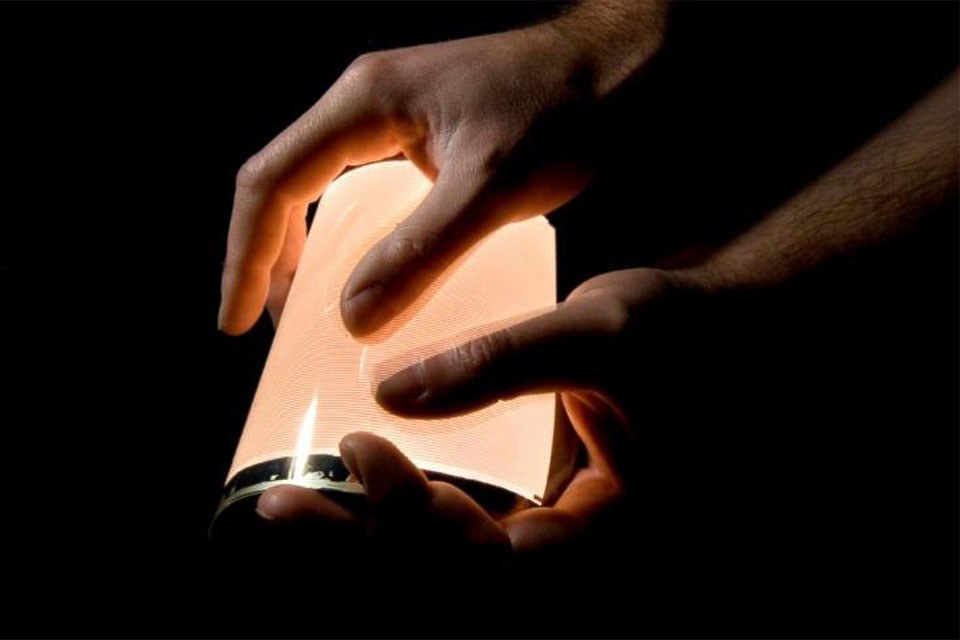Plextronics Partners with Holst Centre to Drive OLED Lighting
Plextronics, a U.S.-based global technology company specializing in printed electronics, and Netherlands-based Holst Centre, an open-innovation initiative by imec (B) and TNO (NL), today announced their partnership on shared research towards flexible organic light emitting diode (OLED) lighting and signage.
With its leading expertise in several of the functional materials needed to develop OLEDs, Plextronics complements the Holst Centre’s existing partners. The Plextronics-Holst partnership’s goal is to improve the scaling of lab device performance to large area OLED lighting and signage devices. This is game-changing technology that opens the door to many possible lighting applications in living and working environments.
An OLED device consists of a light-emitting material in between conductive and protective layers. In order to maximize the electrical current running through these layers, hole injection and hole transport layers are needed between the anode and the light-emitting material. For low-cost processing on flexible substrates, the materials to deposit these layers need to be compatible with solution-based roll-to-roll processing.
Plextronics is a leader in the discovery, development and manufacturing of solution-based hole-injection layers and hole-transport layers. It will make its current Plexcore® hole injection and hole transport inks available within the Holst Centre research program and in return can benefit from the research results for further optimization.
Holst Centre will use the Plexcore® inks in its shared research program on Flexible OLED Lighting and Signage to create functional OLED demonstrators, facilitating their characterization and evaluation as it would be applied in a production environment.
Ton van Mol, Program Manager Flexible OLED Lighting and Signage at Holst Centre said, “Having Plextronics on board is a major asset to our research program. The company’s unique knowledge perfectly complements the existing expertise in the program. It adds strength to the shared effort aimed at making flexible, affordable, and durable OLED lighting commercial products for future lighting solutions.”
“Holst Centre is a leading research institute for printed electronics that is renowned for facilitating partner companies to use the open innovation model. Plextronics will apply the knowledge gained from this work to enhance our Plexcore® hole injection and hole transport products used in large area hybrid lighting panel manufacturing today and all solutions processed manufacturing applications under development ,” said Mathew Mathai, Director, OLED Lighting at Plextronics. “We are excited to participate in the OLED Lighting Technical Integration Program with other ecosystem partners to help solve the challenges of scaling OLED lighting.”
About Plextronics:
Plextronics, Inc. is a global technology company that specializes in conductive polymers and printable formulations that enable advanced electronic devices. Headquartered in Pittsburgh, Pennsylvania, the company's develops customized inks to enhance the performance of organic light emitting diodes (OLEDs) for next generation displays and lighting applications, lithium ion batteries, polymer metal capacitors, and emerging organic electronic devices.
The privately held company was founded in 2002 as a spinout from Carnegie Mellon University based upon conductive polymer technology developed by Dr. Richard McCullough. Plextronics has developed this technology for market adoption and currently manufactures and delivers its conductive polymer products around the world. The company is ISO 9001:2008 and ISO 14001:2004 certified. For more information about Plextronics, visit www.plextronics.com.
About Holst Centre:
Holst Centre is an independent open-innovation R&D centre that develops generic technologies for wireless autonomous sensor technologies and for flexible electronics. A key feature of Holst Centre is its partnership model with industry and academia around shared roadmaps and programs. It is this kind of cross-fertilization that enables Holst Centre to tune its scientific strategy to industrial needs. Holst Centre was set up in 2005 by imec (Flanders, Belgium) and TNO (The Netherlands) with support from the Dutch Ministry of Economic Affairs and the Government of Flanders. It is named after Gilles Holst, a Dutch pioneer in Research and Development and first director of Philips Research.
Located on High Tech Campus Eindhoven, Holst Centre benefits from, and contributes to, the state-of-the-art on-site facilities. Holst Centre has over 170 research staff from about 28 nationalities and a commitment from more than 35 industrial partners.
Visit us at www.holstcentre.com


